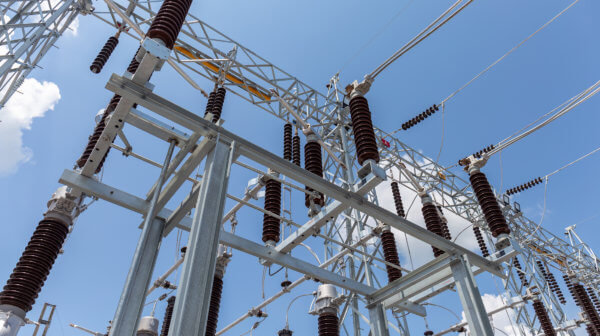Electrify your business fleet – the process of getting an electrical connection
Electric Vehicles [EVs] are thriving. Latest figures from Total affirm that over 150,000 EVs are now recorded in the UK, with numbers expected to reach 1 million in the next couple of years and 9 million by 2030.
As well as this astounding foresight of economic growth, the framework necessary for charging the vehicles is also making fantastic progress. A recent study from Zap-Map highlights how the amount of EV chargers in the UK has actually surpassed the amount of petrol stations.
With UK businesses starting to investigate the economic and environmental advantages of electrifying their fleets, it seems like an ideal time to revisit how we fit charging facilities.
EV charging – The basics:
In simple terms, EV chargers require an electrical supply. Quantifying the size of the necessary electrical supply is dependent on the power rating and amount of EV chargers you propose to fit.
A couple of slow chargers [up to 3kW] intended for overnight charging are in less demand than a batch of faster Direct Current [DC] chargers [over 50kW] which can easily charge a vehicle in between 30 to 60 minutes.
EV chargers can create harmonic distortion on the network and so therefore, you must inform your Distribution Network Operator [DNO] of your intention to fit EV chargers. This will guarantee that the local network can manage, even if you have the capacity available in your current supply agreement.
You can work out what type of EV chargers you will need using the following guidance:
- Working out how much capacity is necessary
- The rate at which your vehicles must be charged decides the type of charger you require.
- Slow chargers – fully charged in 8 to 10 hours and are normally rated up to 3kW.
- Fast chargers – fully charged in 2 to 5 hours and are normally rated between 7kW and 22kW.
- Rapid chargers – fully charged in 30 to 60 minutes and are normally rated at any figure above 55kW.
The Tesla supercharger, to take an extreme example, functions at 120kW and the ABB Terra High Power at an incredible 350kW.
It is also essential to examine the number of EVs and your charging routine, and therefore one must consider several different factors:
Is it possible to charge your vehicles overnight? You could even think about setting up a charging strategy with staggered times throughout the day. Or will you put EVs on charge every day, at the same time?
Factors like this help to control how much power you will be most likely to need at any singular time.
Do you plan to possess any export?
Could you or are you interested in connecting your EV chargers to a battery storage solution? By doing so, you can charge the battery during lower-cost tariff periods and then issue power to the vehicles during higher tariff periods. This means it becomes easier and more cost-effective to charge EVs regardless as to when they need a power boost.
However, it is important to note that if you do opt for a battery storage solution to help electrify and power your fleet, the Distribution Network Operator [DNO] must study the network’s capacity to handle the export of electricity back and forth, as the battery storage system constantly charges and discharges.
Is the capacity locally available?
You will need to find out whether the electrical load you require is readily accessible from the local distribution network, and this can be done by applying for a Point of Connection [PoC] from your Distribution Network Operator [DNO].
What is a PoC? Put simply, it is a specific spot on the distribution network [normally a cable, overhead line, or substation] where you can plug in a cable, transporting the necessary supply over to your site.
The DNO supplies you with a quote that sums up the total cost for you. Prices can be impacted to some extent by whether:
- The DNO needs to carry out any reinforcement work on their network to issue you with this PoC, and if they do, then these costs are transferred onto you.
- And whether they provide you a PoC at a Low Voltage [LV] or High Voltage [HV] will influence it too, since HV will need a sub-station installed which will increase the cost.
Independent Connection Providers [ICPs], like Rock Power Connections for instance, can supply you with other quotations to improve your electrical connection.
Who is responsible for the installed network?
If the DNO installs your new electricity supply, they will also own it. This is called ‘adopting,’ and it will mean your connection will become part of the distribution network. They then become responsible for all future maintenance and ensuring the power remains on. There are a number of independent DNOs [IDNOs] who will also adopt your installation and will provide a financial incentive upon energisation. This can make a competitive proposition to the DNO. Rock Power Connections has established relationships with IDNOs and can organise this on your behalf.
Read next
Building Network Operator (BNO) installations made easy
We like to make electrical connections simple. ‘Building Network Operator’ or BNO is a term often heard in relation to apartment or mixed-use developments. Cutting through the technical terminology and legal details can be…
IDNO vs DNO: What’s the difference?
When a new electricity supply is required for a development, the organisation who owns the cables in the area will need to be contacted to see if there is available capacity. This organisation is…

Mitie bolsters high voltage electrical infrastructure capabilities with acquisition of Rock Power Connections Limited
Mitie has acquired Rock Power Connections Limited, an Independent Connection Provider, specialising in the design and installation of new high voltage electricity supplies, the renewal of electrical assets up to 132kV and electric vehicle…
 Skip to content
Skip to content